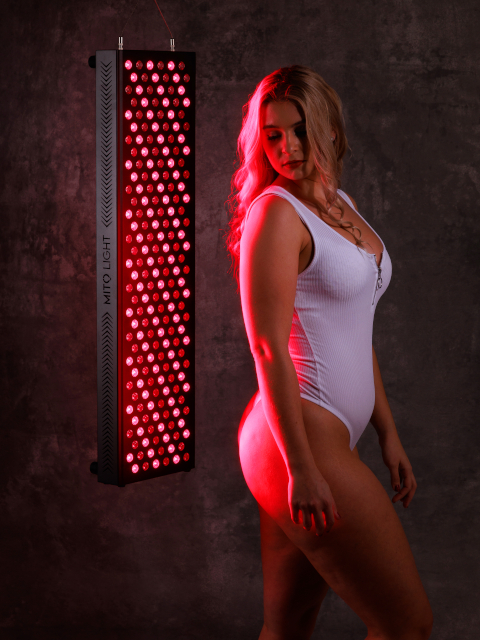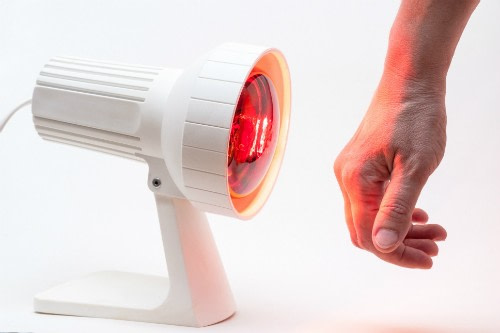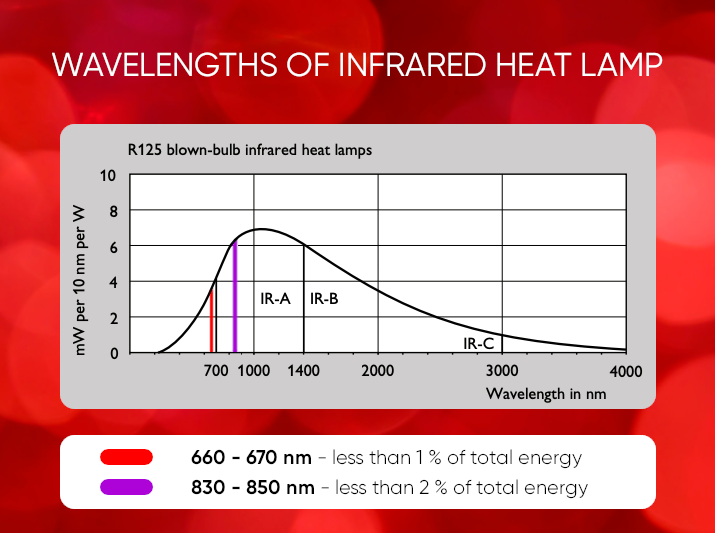What is the difference between the MITO LIGHT® red light therapy products and the infrared heat lamp that your grandmother may have had? This is one of the very common questions we receive from you. In this article, we will explain what are the fundamental technological differences that also result in different effects on our biology.
The main difference is the mechanism of action of these two different devices. While our MITO LIGHT® devices use LED technology and aim primarily at increasing the efficiency of the mitochondria in the production of cellular energy ATP by using specific, carefully chosen wavelengths of red and near-infrared light, conventional infrared heat lamps use halogen technology and work primarily on the principle of heat therapy, since the vast majority of the energy emitted by these lamps is infrared heat.
Why do we use LED technology? Because mitochondria respond to light with wavelengths ranging from approximately 600 to 1000 nm (R). In addition, this range has several specific parts that are most efficient. Modern LED technology allows us to select the best spectra and exploit their full potential with high irradiance. The chromophores in the mitochondria (in particular Cytochrome c oxidase) absorb this type of light, leading to an increase in mitochondrial membrane potential, oxygen consumption, an increase in adenosine triphosphate (ATP) production and a transient increase in reactive oxygen species (ROS), which then results in increased antioxidant activity. These effects result in a wide range of positive effects on our energy, performance, cognition, hormonal function, skin quality, muscle, tendon or joint recovery and much more.

MITO LIGHT® devices use two types of light spectrum. The first type is the visible red spectrum with wavelengths of 660 and 670 nm, which is mainly absorbed by the skin and is important for a healthy and youthful skin. The second type is the near-infrared spectrum at wavelengths of 830 and 850 nm, which penetrates deeper into the body.

Unfortunately, conventional halogen infrared heat lamps do not have this option of selecting specific wavelengths and rely on a wide range of wavelengths from the red to the far infrared spectrum. Because of this, they end up emitting only a minimal percentage of the effective wavelengths that affect mitochondria. In fact, the vast majority of the spectrum generates heat, which may also have some positive effect, such as increased blood flow, but is otherwise diametrically different from the effects of the red and near-infrared spectrum.

Are you still confused? For a final understanding of this topic, it is still important to understand that the infrared spectrum has three types, which differ greatly in their effect. The first is the near-infrared spectrum, which is often referred to as NIR or IR-A. This spectrum has the shortest wavelengths in the approximate range of 750 - 1400 nm. As a result, it emits only moderate heat and penetrates the subcutaneous tissue. However, only part of it is absorbed directly in the mitochondria, wavelengths above 1 000 nm are absorbed by water. Due to these specific properties, it is the most interesting part of the entire infrared spectrum, which is also why we use it in our MITO LIGHT® devices.

Wavelengths of infrared heat lamp (R)
We hope this article has helped you understand the differences between MITO LIGHT® devices and conventional infrared heat lamps. However, if you have any additional questions, feel free to write or call us and we will be happy to explain everything to you.
